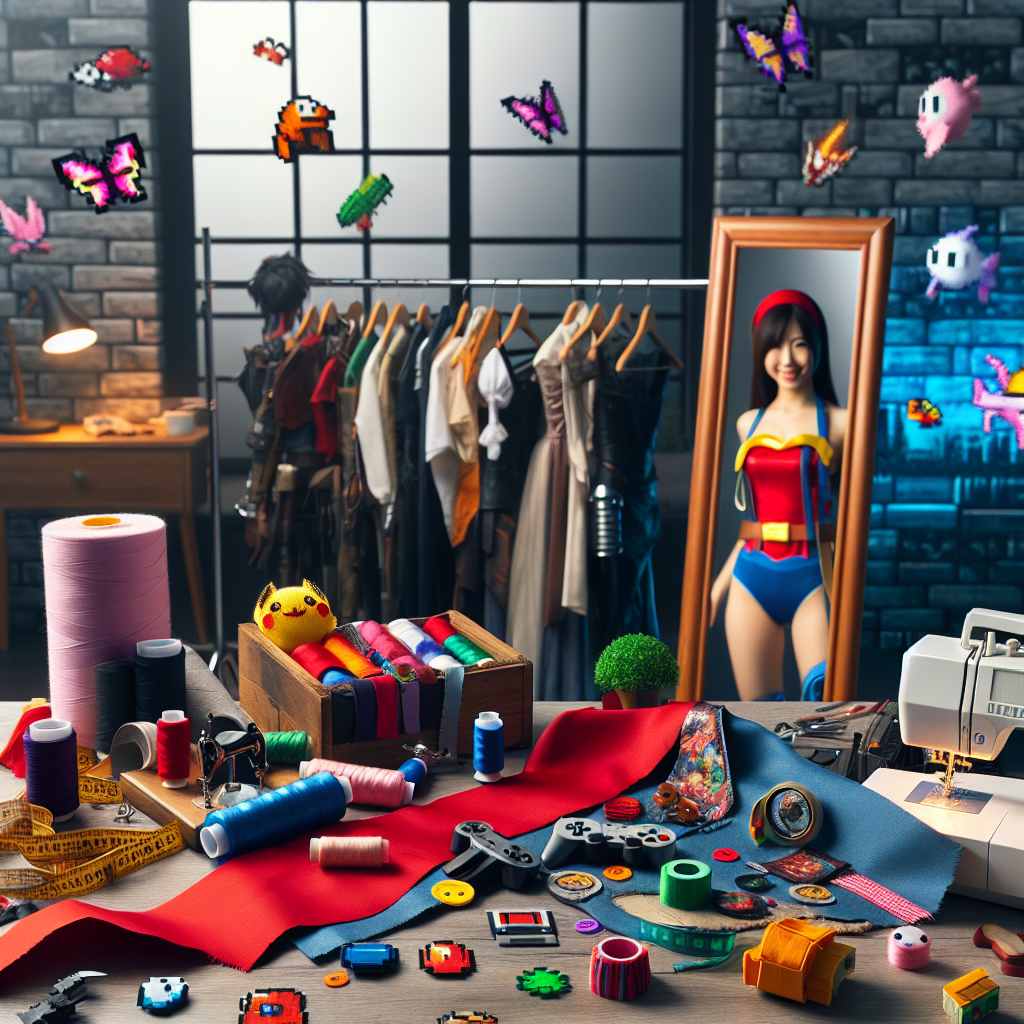From Console to Costume: Crafting the Ultimate Cosplay Inspired by Video Game Legends
The world of video games is not just a medium for interactive storytelling; it’s a vibrant canvas filled with beloved characters, intricate worlds, and powerful narratives. For many enthusiasts, stepping into the shoes of their favorite characters is not only a way to show appreciation but also a creative journey that culminates in the art of cosplay. The challenge of bringing video game legends to life through costume design is both daunting and exhilarating, requiring a mix of creativity, craftsmanship, and a deep understanding of the source material. Here’s a guide to crafting the ultimate cosplay inspired by video game legends.
Understanding Your Character
Before you even pick up a needle or a paintbrush, the first step in any successful cosplay project is choosing the character that resonates with you. Reflect on what draws you to them—perhaps it’s their design, storyline, or abilities. Dive deep into their backstory, the world they inhabit, and their relationships with other characters. This not only helps in creating an authentic costume but also in capturing the essence of the character in your performance and presence while cosplaying.
Tip: Use online forums, game wikis, and fan art to gather different interpretations of your character. This can inspire unique elements in your own design.
Research and Resources
Once you’ve decided on a character, it’s time to research their costume in detail. Look for high-quality images, in-game models, and official artwork to get a comprehensive understanding of all design elements. Pay attention to the textures, fabrics, and colors used in the original design.
Resources: Websites like DeviantArt, Pinterest, or cosplay-specific Instagram accounts can provide a plethora of reference images. Additionally, forums such as Cosplay.com and Reddit’s r/cosplay allow you to connect with fellow cosplayers, gathering advice and tips specific to your chosen character.
Planning Your Design
With your research in hand, you can begin sketching your design. While some cosplayers choose to replicate the outfit exactly, others opt for a more stylized interpretation. Assess the character’s silhouette and distinctive features—armor, weapons, or accessories—and make a list of everything you’ll need.
Tip: Consider the practicality of the costume for wearing it at conventions. Will you be comfortable moving, sitting, or at times, enduring long hours of wear? The design should blend authenticity with wearability.
Materials and Budgeting
Choosing the right materials can make or break your cosplay. From fabrics to crafting supplies, the right choices will ensure your costume not only looks good but holds up through events. Common materials include foam for armor, latex for props, and various textiles for clothing.
Set a budget early in the process to avoid overspending. High-quality materials may be pricier, but they often yield better results. Remember to check local craft stores, online marketplaces, and secondhand shops for deals.
Crafting Your Cosplay
Now comes the exciting part—crafting! Depending on your skills, your cosplay may involve sewing, prop-making, or even armor-crafting.
Sewing: If your character has a costume made from fabric, familiarize yourself with basic sewing techniques. Start with simpler pieces and gradually work toward more complex designs. YouTube is an exceptional resource for tutorials on various sewing techniques.
Prop Making: If your character wields a weapon or accessory, creating a prop can be a rewarding challenge. Foam, wood, and 3D printing are popular methods. Tutorials specific to prop-making can guide your efforts.
Armor: For armored characters, thermoplastics like Worbla or EVA foam are great materials to mold and shape, providing a lightweight alternative to metal.
While working on your cosplay, keep in mind the 80/20 rule: 80% of the effort will yield 20% of the results, so prioritize significant details first to ensure the most prominent aspects of your outfit stand out.
Fitting and Finishing Touches
Once you’ve crafted the bulk of your costume, try it on often to assess fit and comfort. Adjustments are a natural part of the process. Once everything fits well, focus on the finishing touches—weathering, additional details, and makeup that enhances your character’s look.
Makeup: Developing effective makeup routines, especially for fantastical characters, can add another layer of authenticity to your cosplay. Tutorials can help with everything from simple face paint to intricate designs.
Bringing the Character to Life
Finally, cosplay is not merely wearing a costume; it is about embodying the character. Research their mannerisms, favorite quotes, or even find out how they might respond in certain scenarios. The more you can emulate them, the more immersive the experience will be for both you and those around you.
Participate in photoshoots, conventions, or cosplay contests to showcase your hard work, but above all, remember to enjoy the process. Sharing your experience with the community, whether through social media or in person, will only enhance your passion for this art form.
Conclusion
Crafting a cosplay inspired by video game legends is an enjoyable and fulfilling experience that bridges the gap between fandom and creativity. With detailed research, careful planning, and a passion for the character, you’ll create a costume that not only captures the spirit of the game but also stands out in the bustling world of cosplay. So equip yourself with creativity and dedication; after all, the spirit of gaming thrives in the stories we tell and the characters we bring to life. Happy cosplaying!




